The Big Island of Hawaii is only 122 kilometres long but has some of the most unique, once-in-a-lifetime activities in the world. From diving with giant mantas, walking on top of lava lakes, inside lava tubes and sunbathing on green sand beaches – it’s the perfect destination to tick a few things off your bucket list.
Unique Things to Do on the Big Island
Here are the top six unique things to do on the Big Island
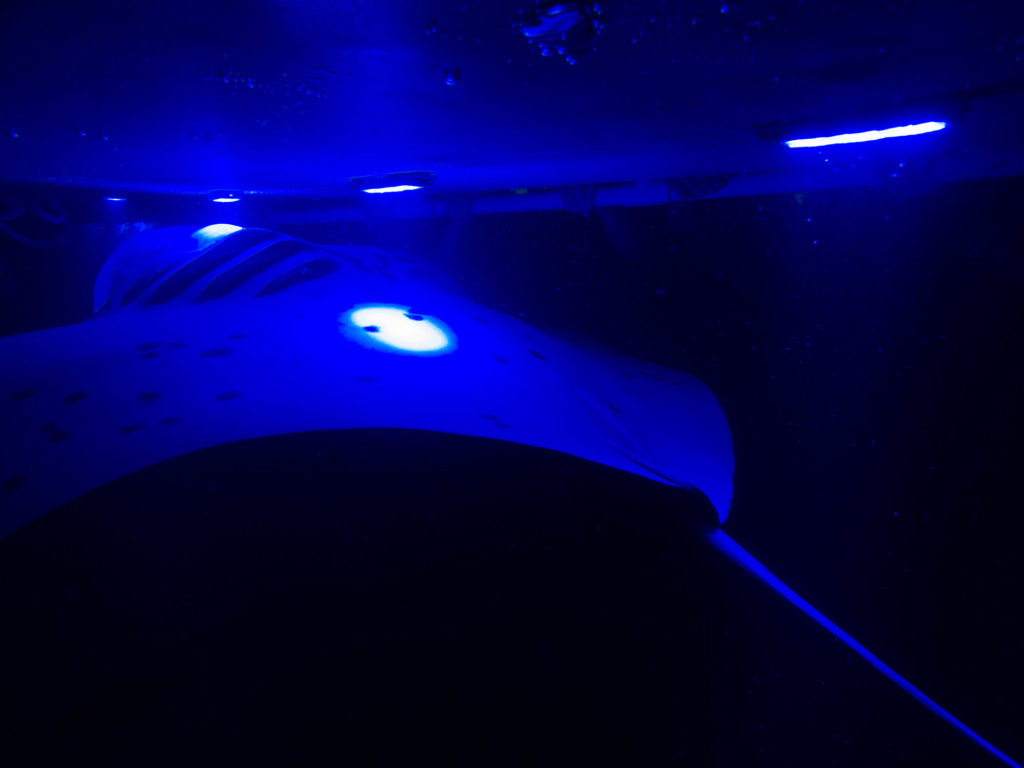
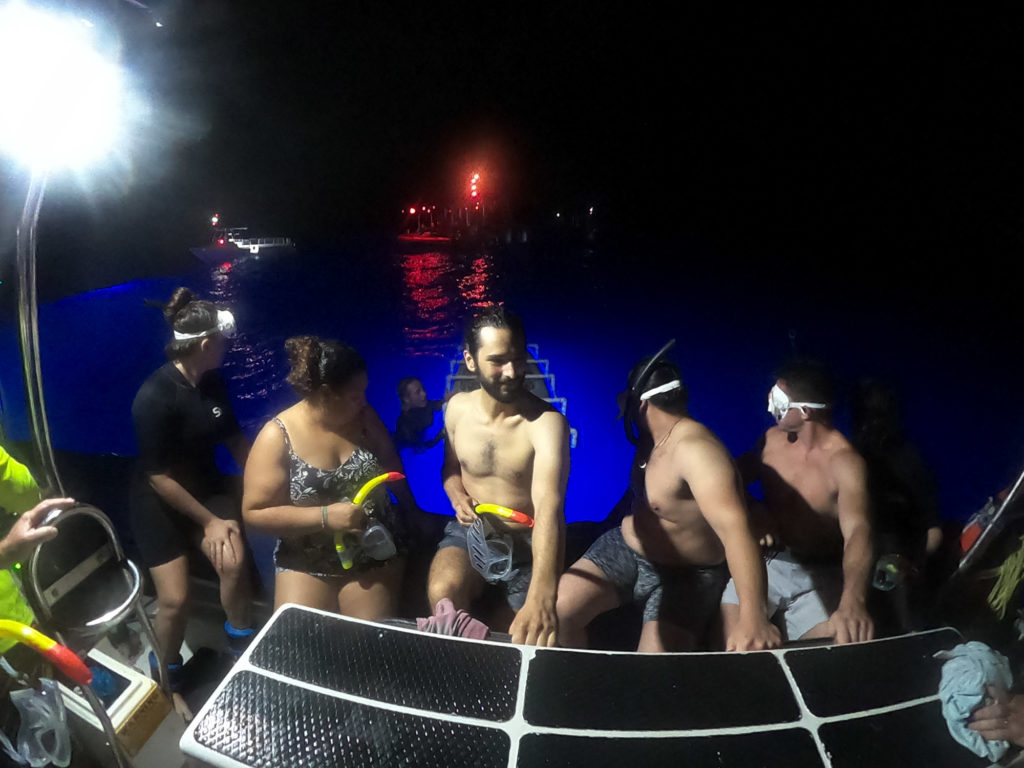
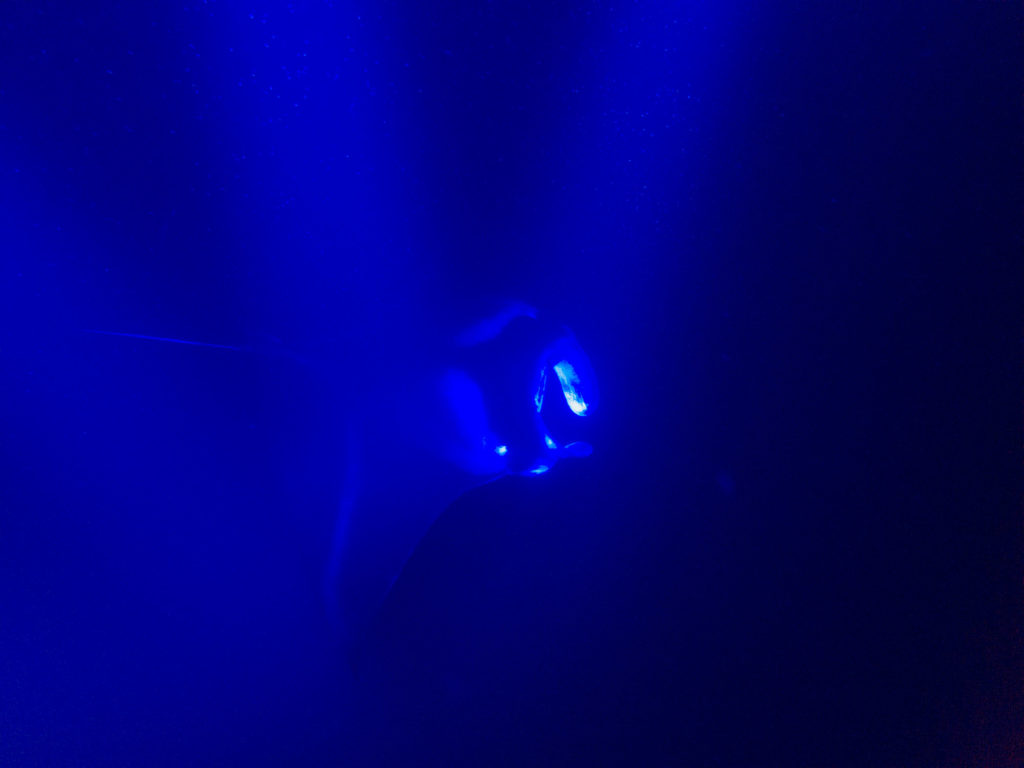
1. Night Snorkel with Giant Manta Rays
Only on the Big Island can you go night snorkelling with giant manta rays (and are almost guaranteed to see them!) The easiest way is to book a tour with one of more than a dozen companies that head out every night from sunset to midnight taking snorkellers out.
The whole experience lasts about an hour with a total time of 30-minutes in the water with the giant mantas. Snorkel companies set up big floating boards with PVC piping acting as handlebars around the board. This makes it easy to hang onto while floating in the water. There’s no need to do any swimming other than to and from the boat, which is only feet away when getting in and out of the water. A guide will be with you the whole time.
Big strobe lights are pointed downwards from the board which attract the giant mantas. Mantas have learned to use the lights to help them feed on plankton. The mantas come within inches of you and sometimes even brush up against you. (While the mantas may touch you, it’s illegal to reach out or intentionally touch them).
While not necessary as the water temperatures are quite warm, renting a wetsuit makes the experience more comfortable.
During the day, it’s possible to kayak or paddleboard out to the point at Keauhou Bay for a chance to see giant mantas in the water below. Go early for the best chance of seeing them.
READ MORE: Best Beaches on the Big Island
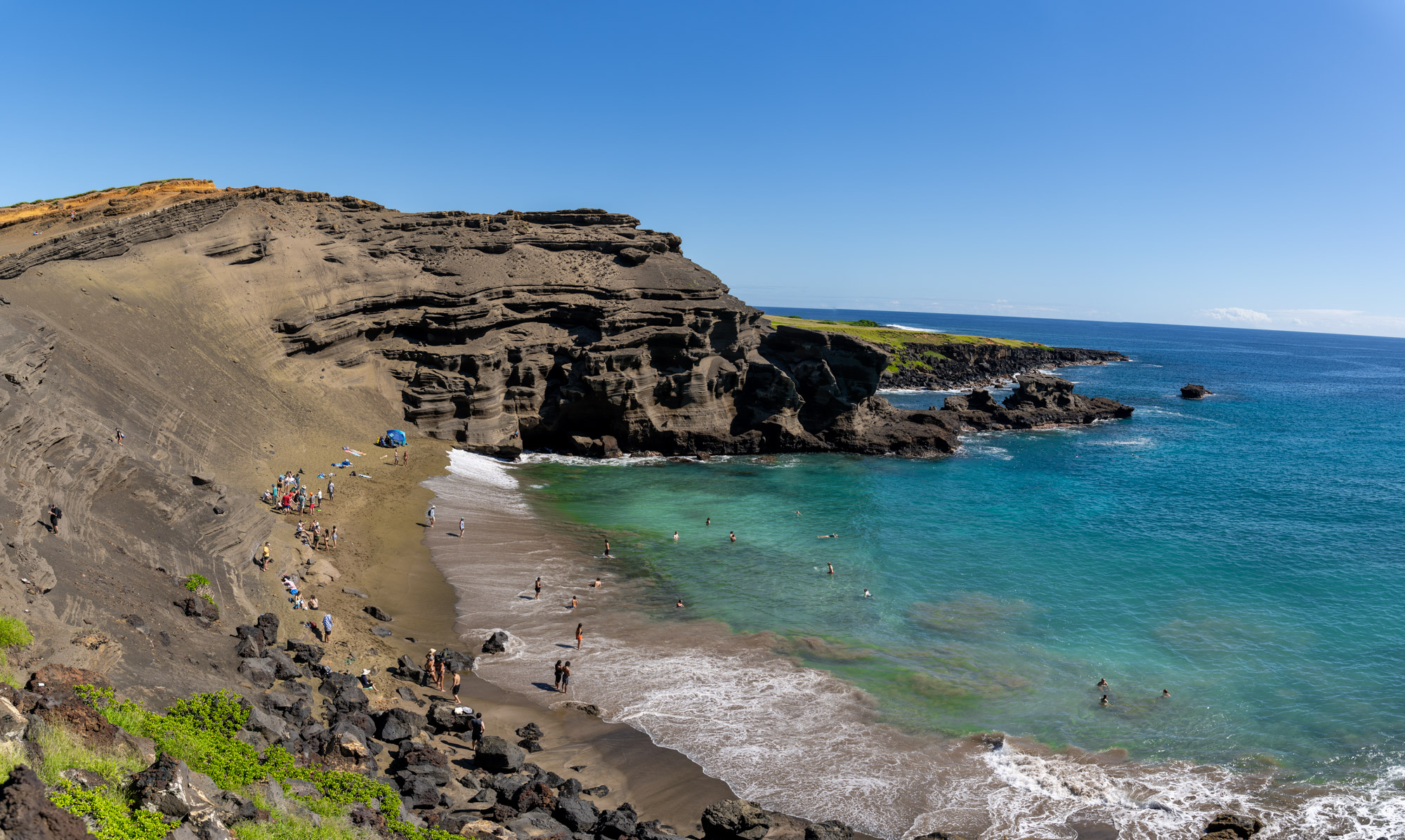
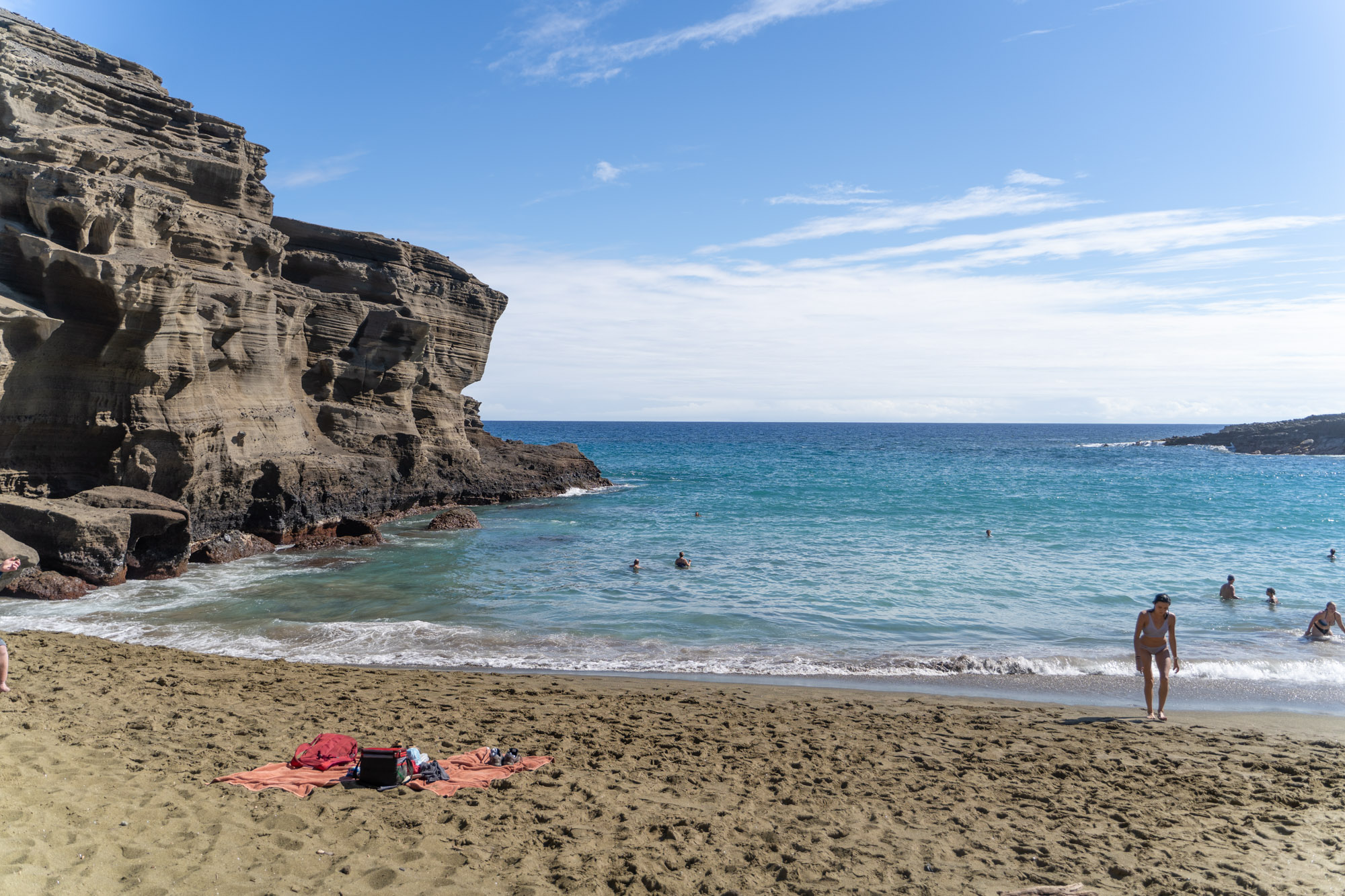
2. Hike to a Green Sand Beach
Papakolea Beach is one of only four green sand beaches in the entire world. (Guam, Galapagos Islands and Norway are home to the other three). This makes Papakolea an incredibly unique beach to visit and a once-in-a-lifetime experience when you’re on the Big Island.
The headland is made up of olivine which is a common component of lava. Over time, the rock-forming mineral breaks down through weathering and the crystals collect on the beach as sand.
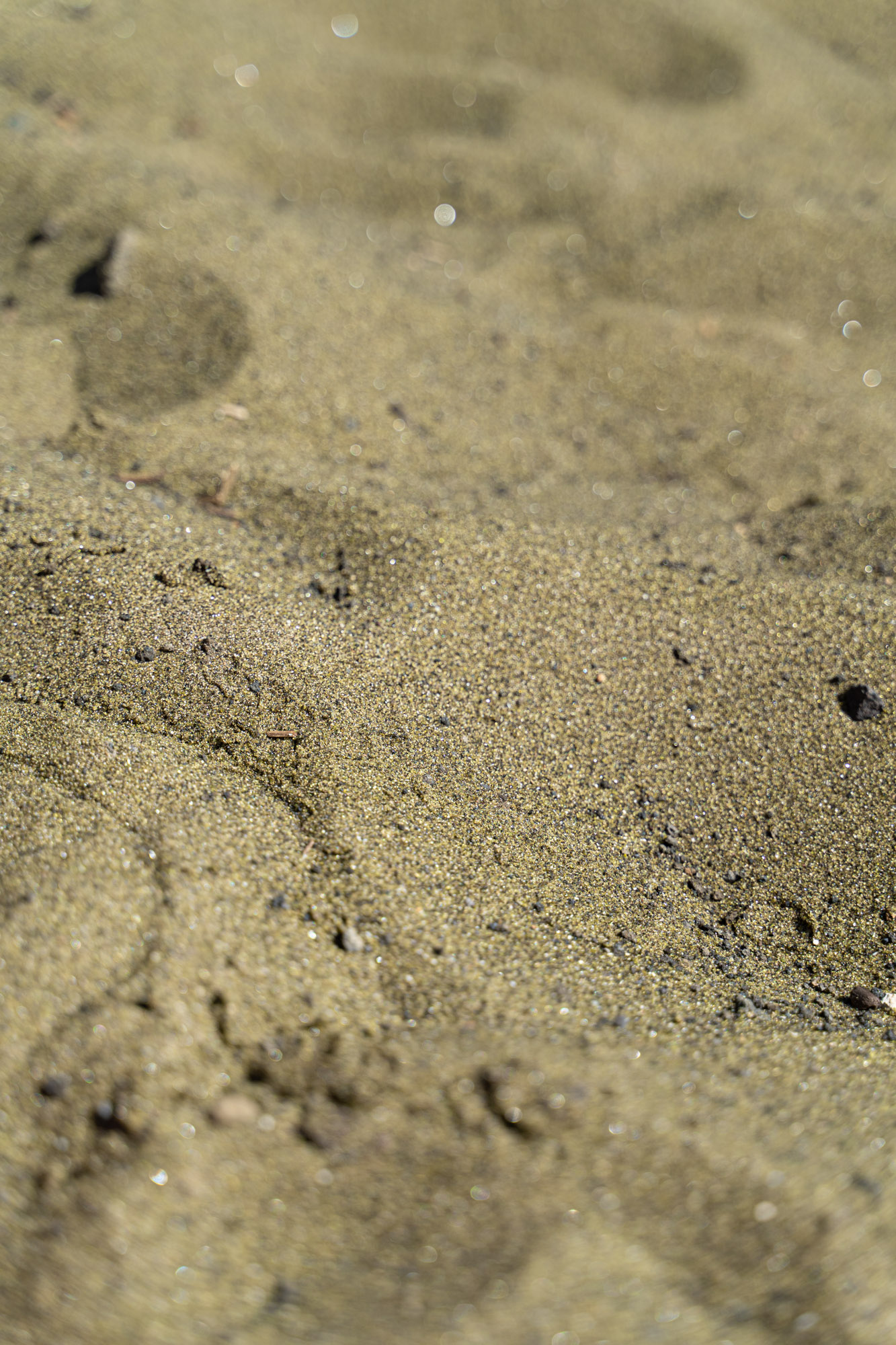
But it’s not the easiest place to visit. You’ll have to hike 10.2 km / 6.3 miles return under Hawaii’s hot sun to reach the beach. Located close to Ka Lae in the south of the Big Island, there is a parking lot at the trailhead and the hike is relatively flat. The descent into the bay along the bowl-shaped cinder cone is the most difficult part of the hike. For more details on the hike, read more here.
READ MORE: 5 Best Hikes on Hawaii’s Big Island
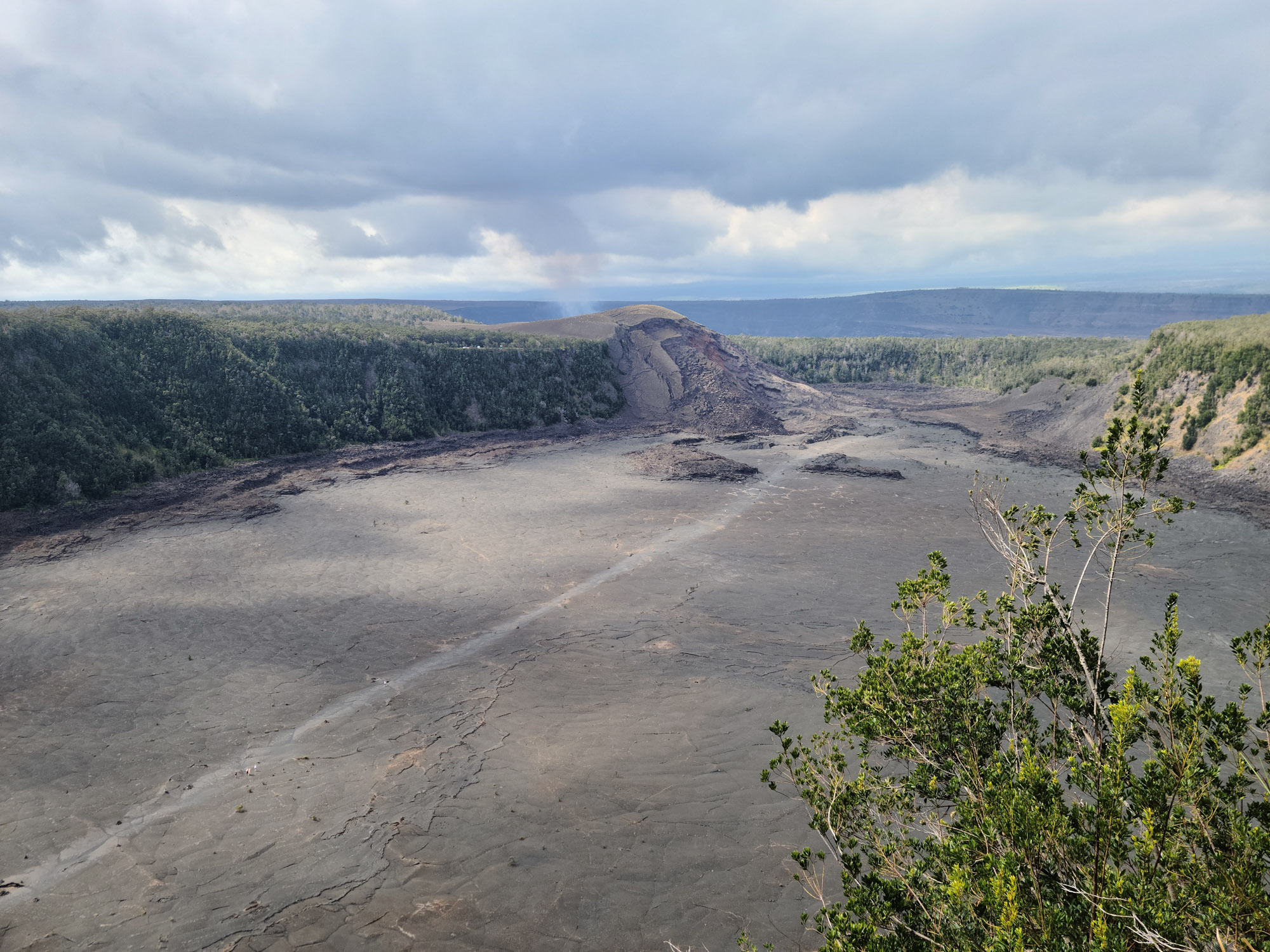
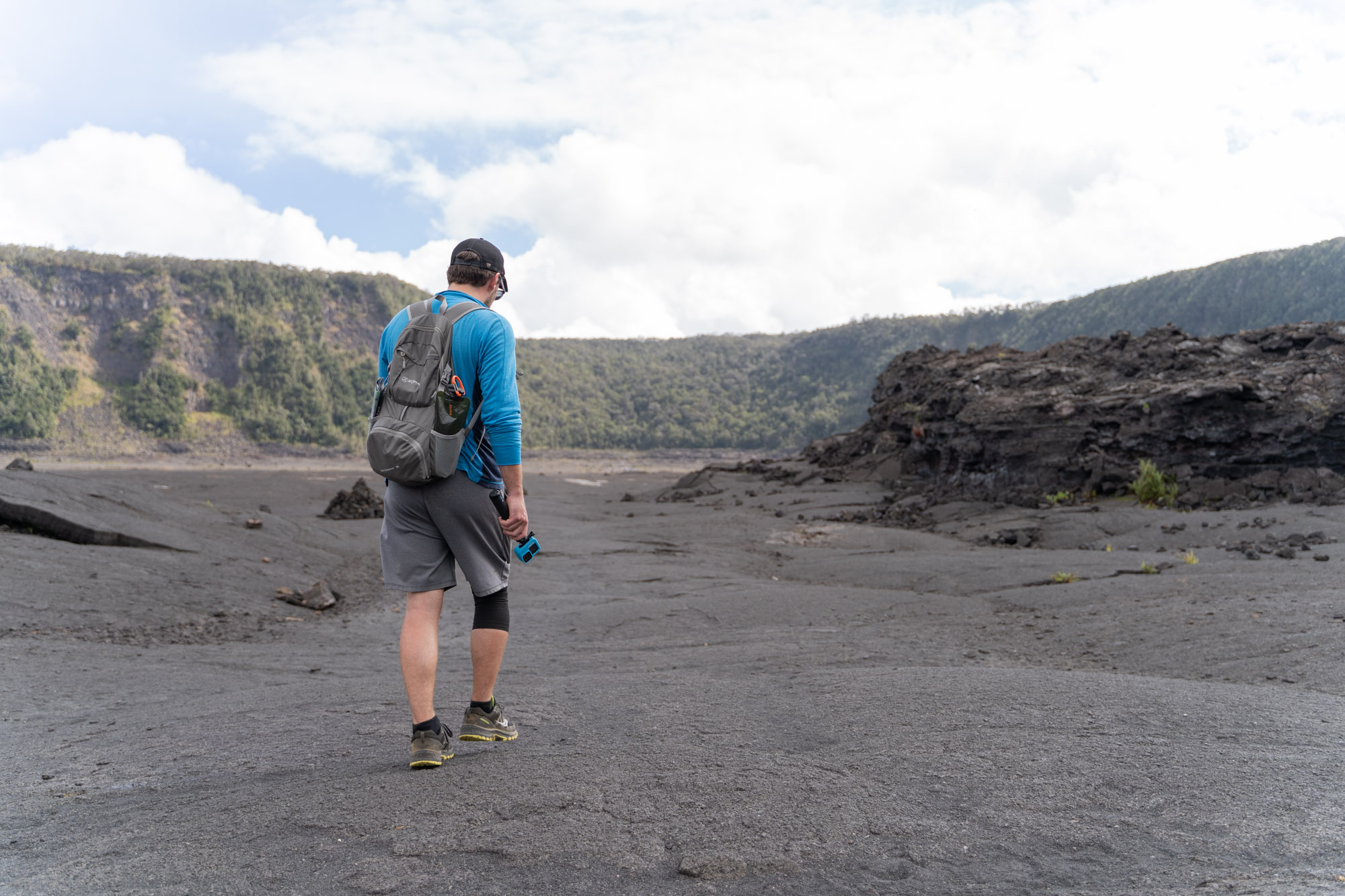
3. Walk on a Lava Lake in a Volcanic Crater
In Volcanoes National Park, you can hike along the rim of a pit crater that was filled by a volcanic lake in 1959. Even cooler, you can hike down into the crater and actually walk the entire length of it. While many people choose to hike down and then up the same trail from the Kilauea Iki Overlook parking lot, the Kilauea Iki Trail is a 5.3 km / 3.3 mile loop that takes you through the rainforest and then into the crater. The whole loop is worth doing for its numerous viewpoints and opportunity to cross the entire crater. The hike back up out of the crater is fairly steep – it ascends 122 metres / 400 feet through a series of switchbacks. Read more about the hike here.
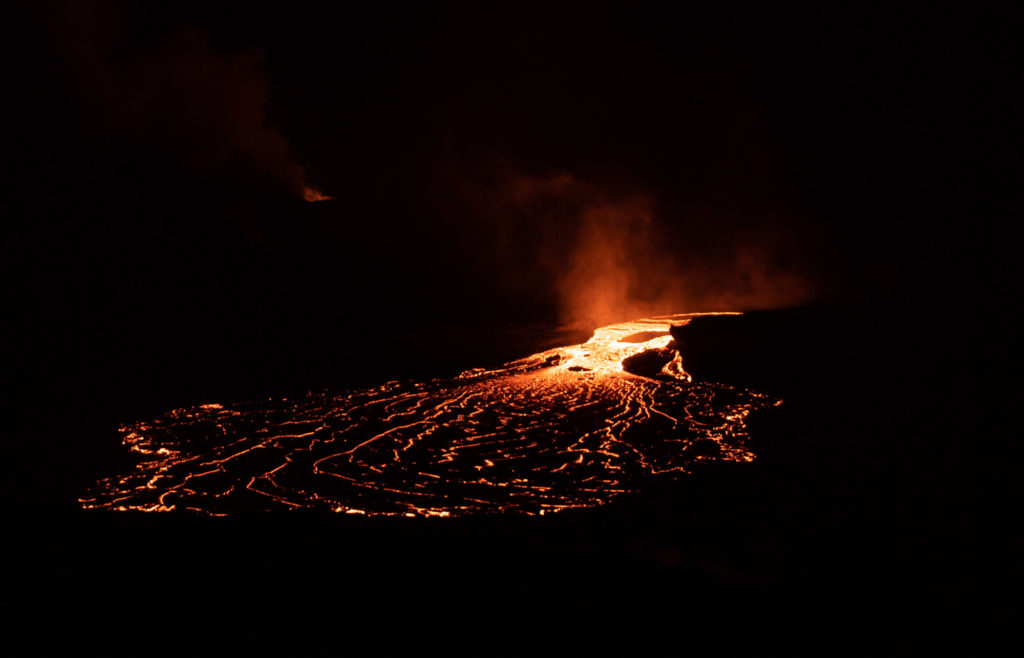
4. See Lava
While there’s never a guarantee there will be an active eruption occurring on the Big Island when visiting, it’s an absolute must-visit if it is. How close you can get to an active eruption all depends on where it is in the park and what viewing locations are accessible to the public. The best tip is to check out the National Park website for updates as well as videos and photos on their website of any current eruptions.
The good news for visitors is, since September 2021, there’s been an active, ongoing eruption in the Halema’uma’u crater. The best time to see the eruption is at night when it’s glowing red and clearly visible in the dark. But it’s also worth going during the daytime to see it in the light. Parking lots get full quickly so it’s best to go later in the evening than right after sunset. The viewpoint is a 1-mile hike along a closed-roadway in the dark, so make sure to bring a headlamp.
For more details on current eruptions and accessibility, read more here.
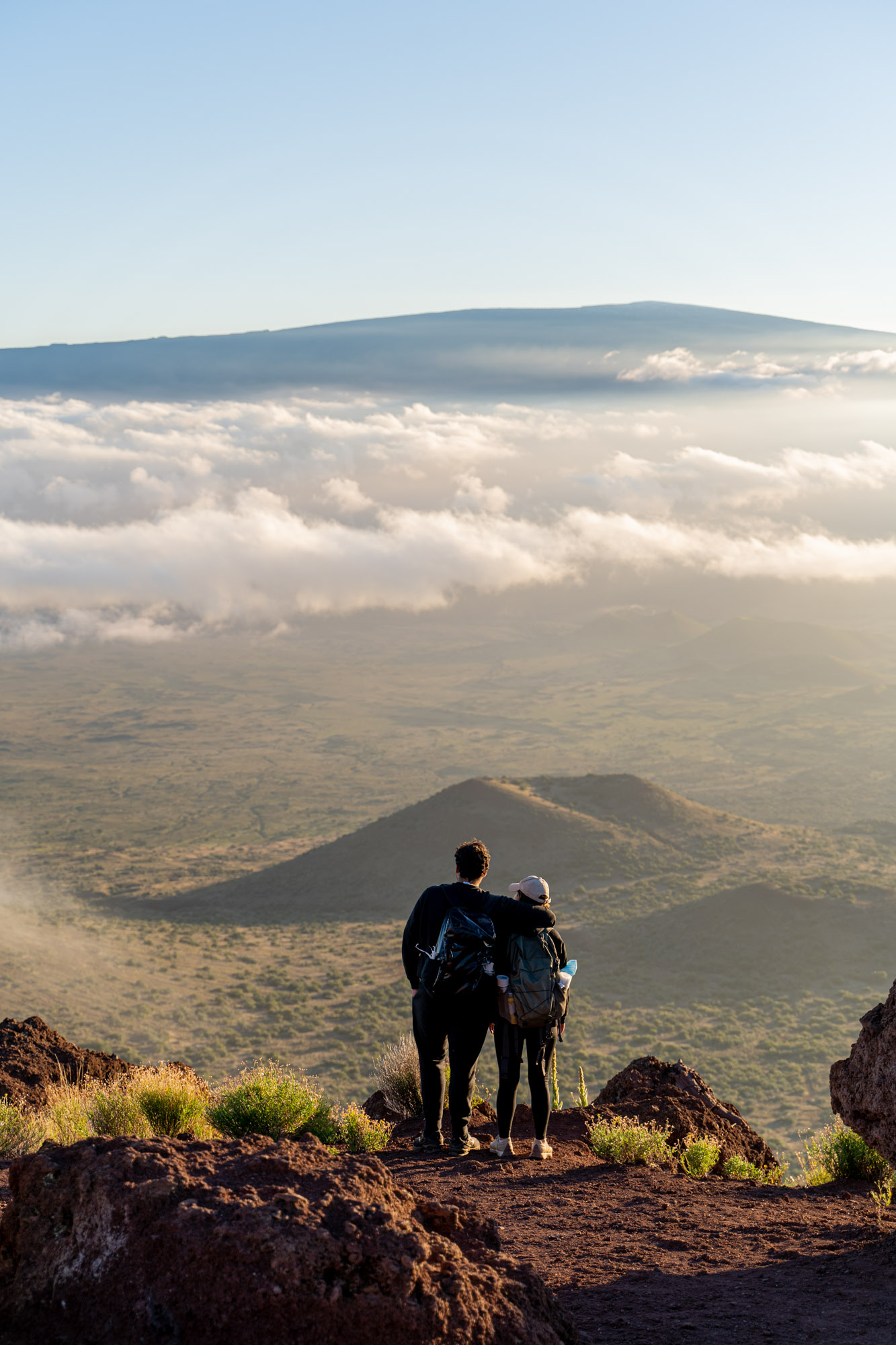
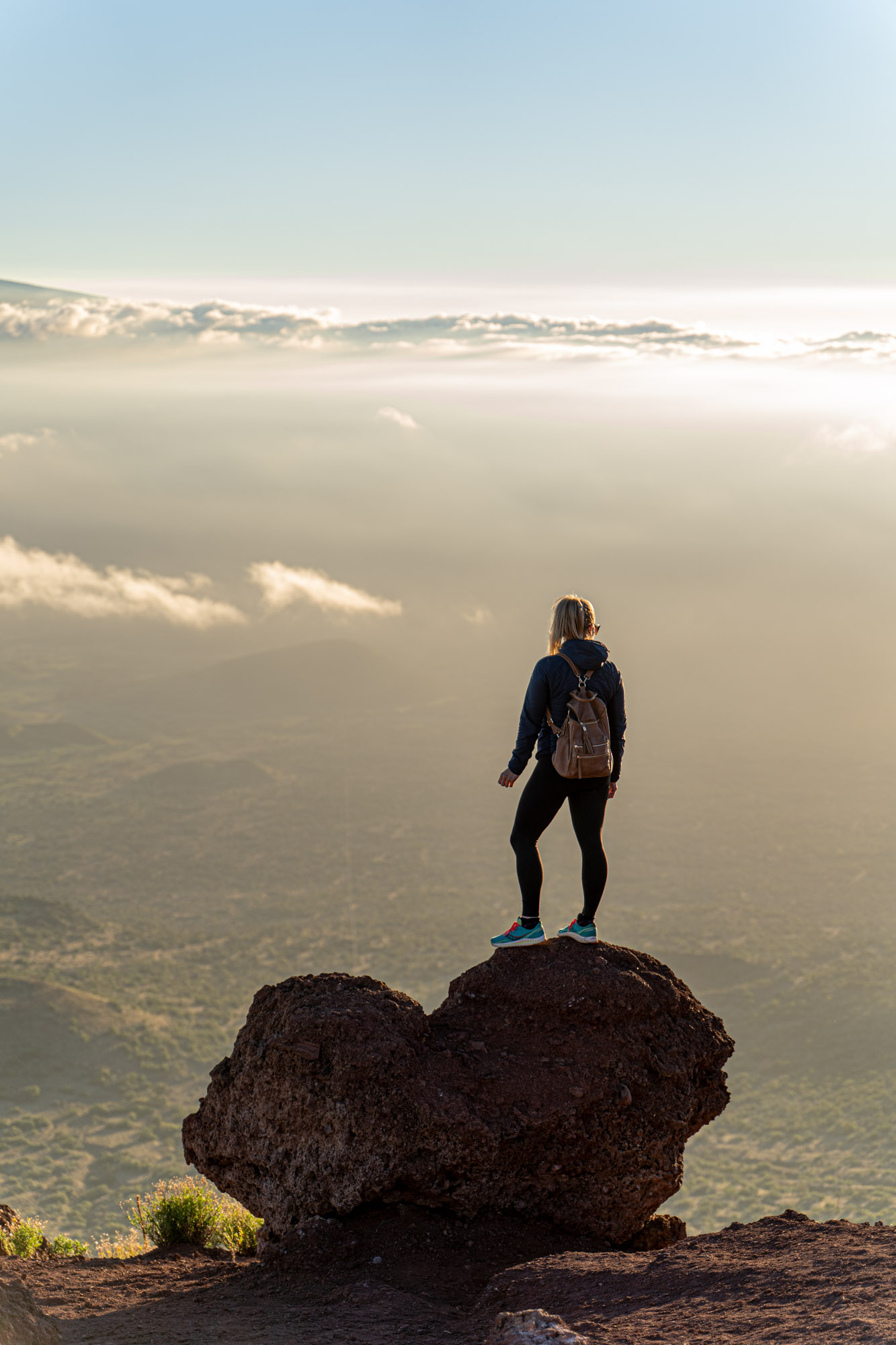
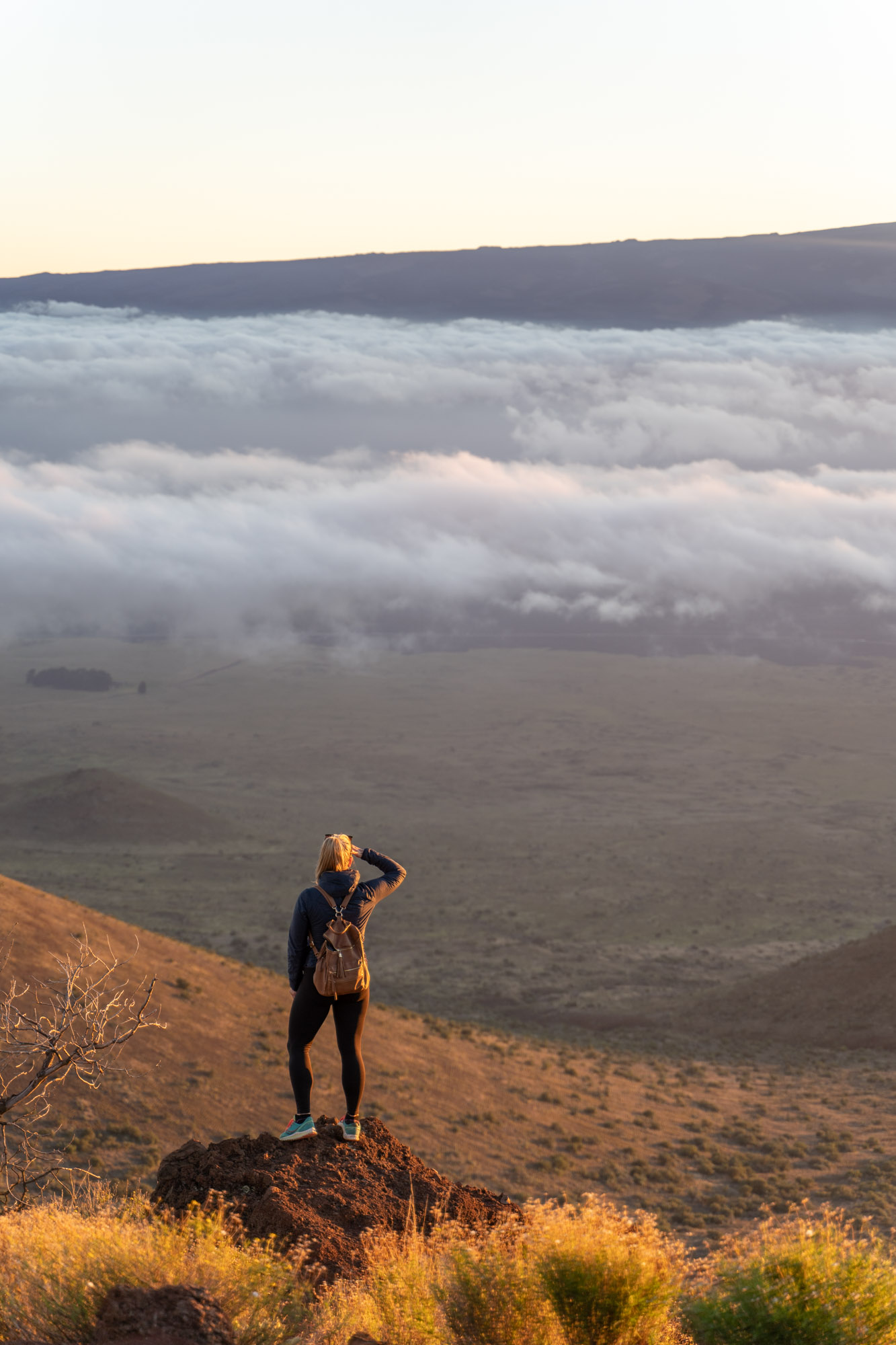
5. Watch Sunset on the World’s Largest Mountain
While it doesn’t quite look like it because the majority of it is under the ocean, Mauna Kea on the Big Island is the highest peak in the world at 10, 210m / 33, 500 feet. While it is possible to reach the summit if you have a 4×4 vehicle or take a tour, the easiest way to experience Mauna Loa is a stop at the Onizuka Center for International Astronomy visitor station. Located at 2,800 m / 9, 200 feet above sea level it’s easy to drive up here.
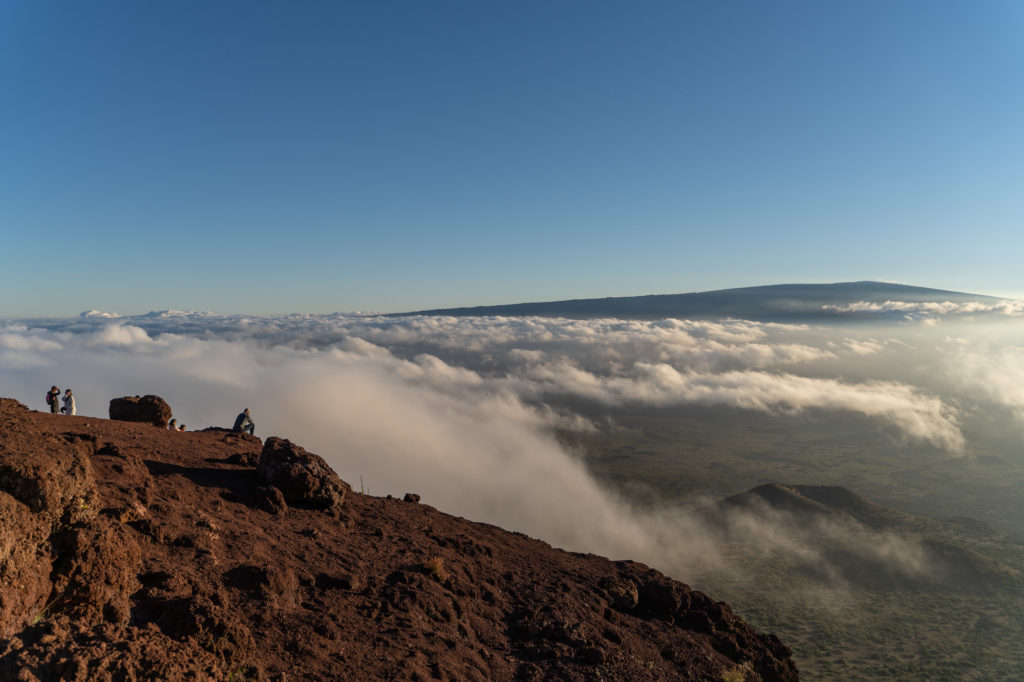
But even better is taking a stroll up Sunset Hill Trail near the centre. The views of Saddle Road are extraordinary. Because it’s also at such a high elevation, there’s a good chance you’ll get to experience a cloud inversion while the setting sun splashes its final light across the island. If you stick around after the sun goes down, you’ll also be rewarded with incredible views of the stars and night sky.
READ MORE: Best Food to Try on the Big Island
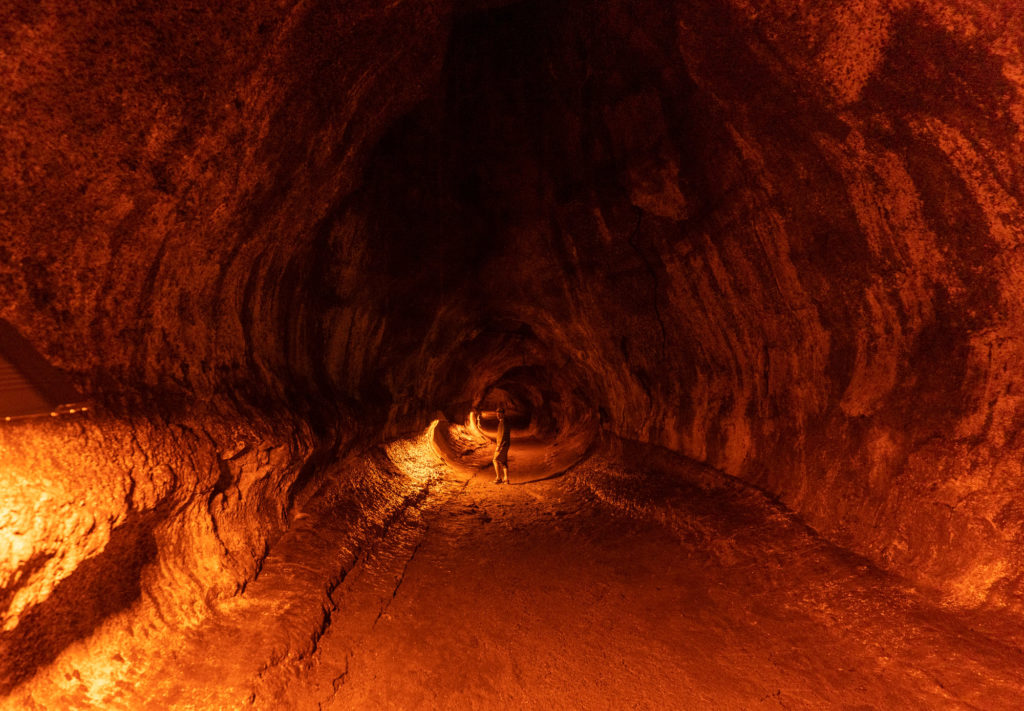
6. Walk in a Lava Tube
One of the most popular lava tubes on the Big Island is the 500-year old Thurston Lava Tube located in Volcanoes National Park. The tube was formed by a river of lava more than 1000ºC / 2000ºF. The tube was formed when the lava supply ended or was diverted elsewhere. What’s left behind is an empty tubular cave. There is a boardwalk and the tube is lit but pack a headlamp or a flashlight if you go.
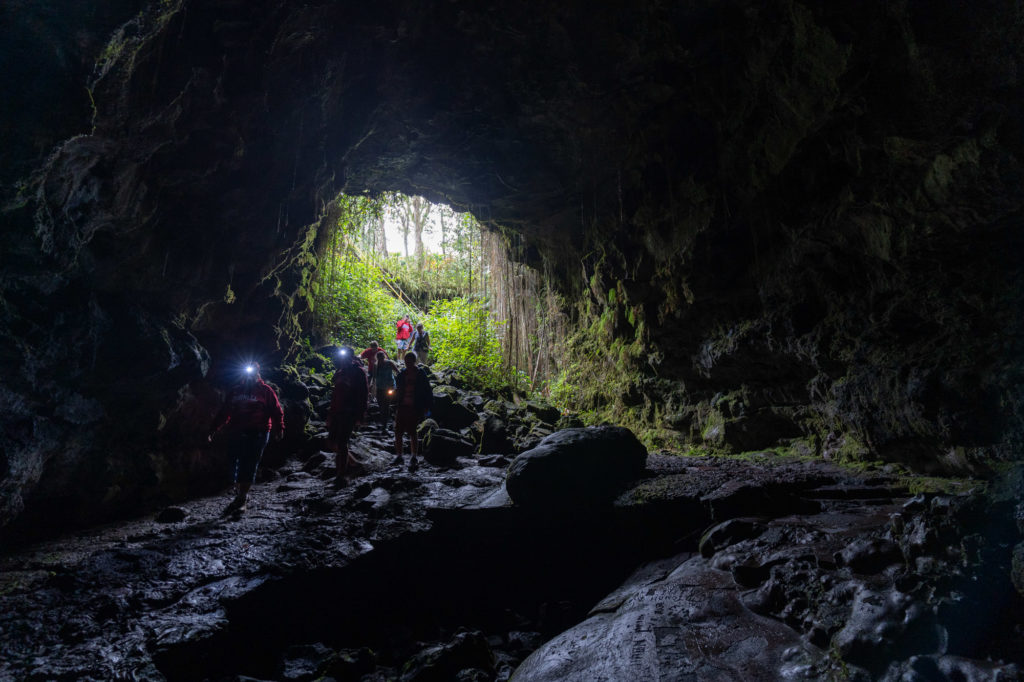
A second lava tube worth visiting is the 25-mile long Kaumana Lava Tube near Hilo. This tube was created by the 1881 flow from Mauna Loa and is free to access. While there is a staircase down to the tube, there is no pathway and no lights. Closed-toed shoes and a flashlight are a must if you want to go exploring (at your own risk). At the bottom of the staircase, the tube splits in two, one going to the right and one to the left. The tubes have ledges, outcroppings and low ceilings to navigate. There are about 2 miles of accessible lava tubes to explore.
Found this post helpful? Pin it on Pinterest!
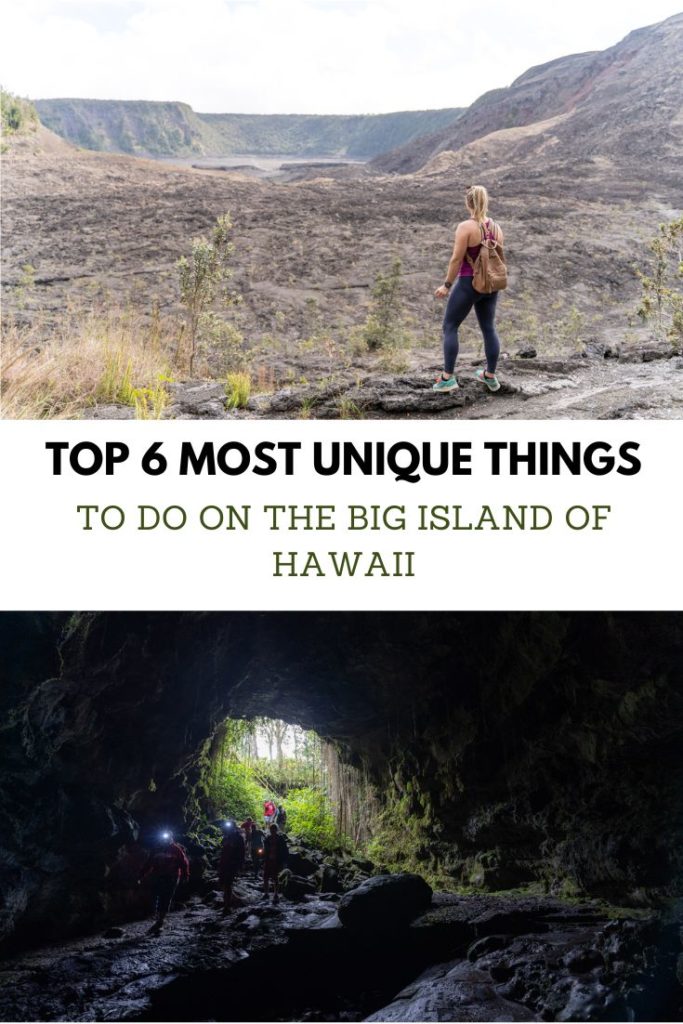
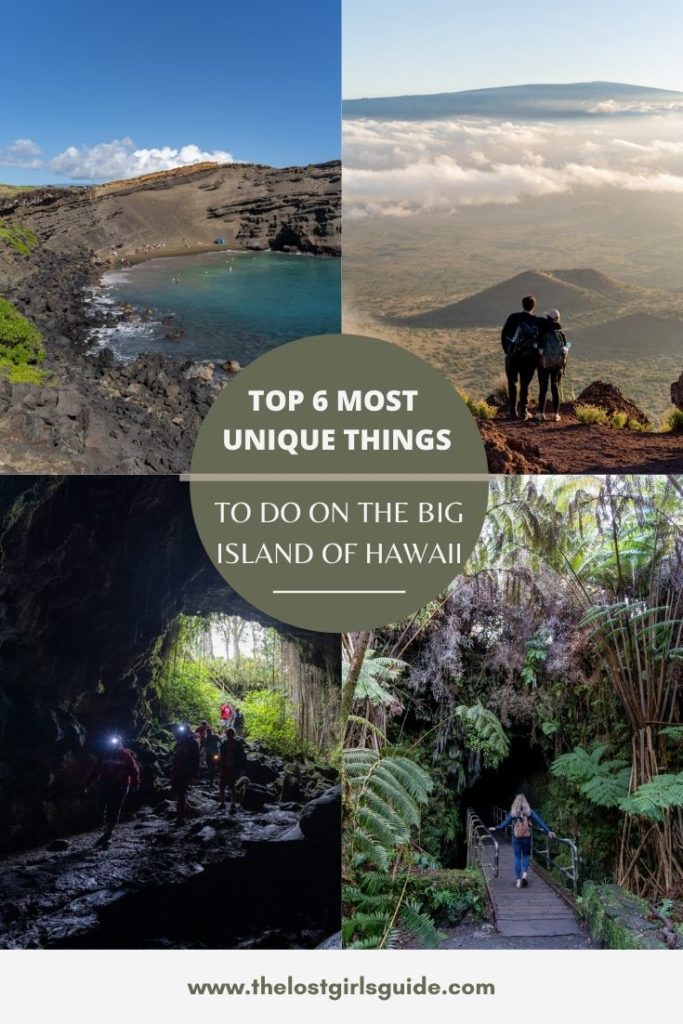

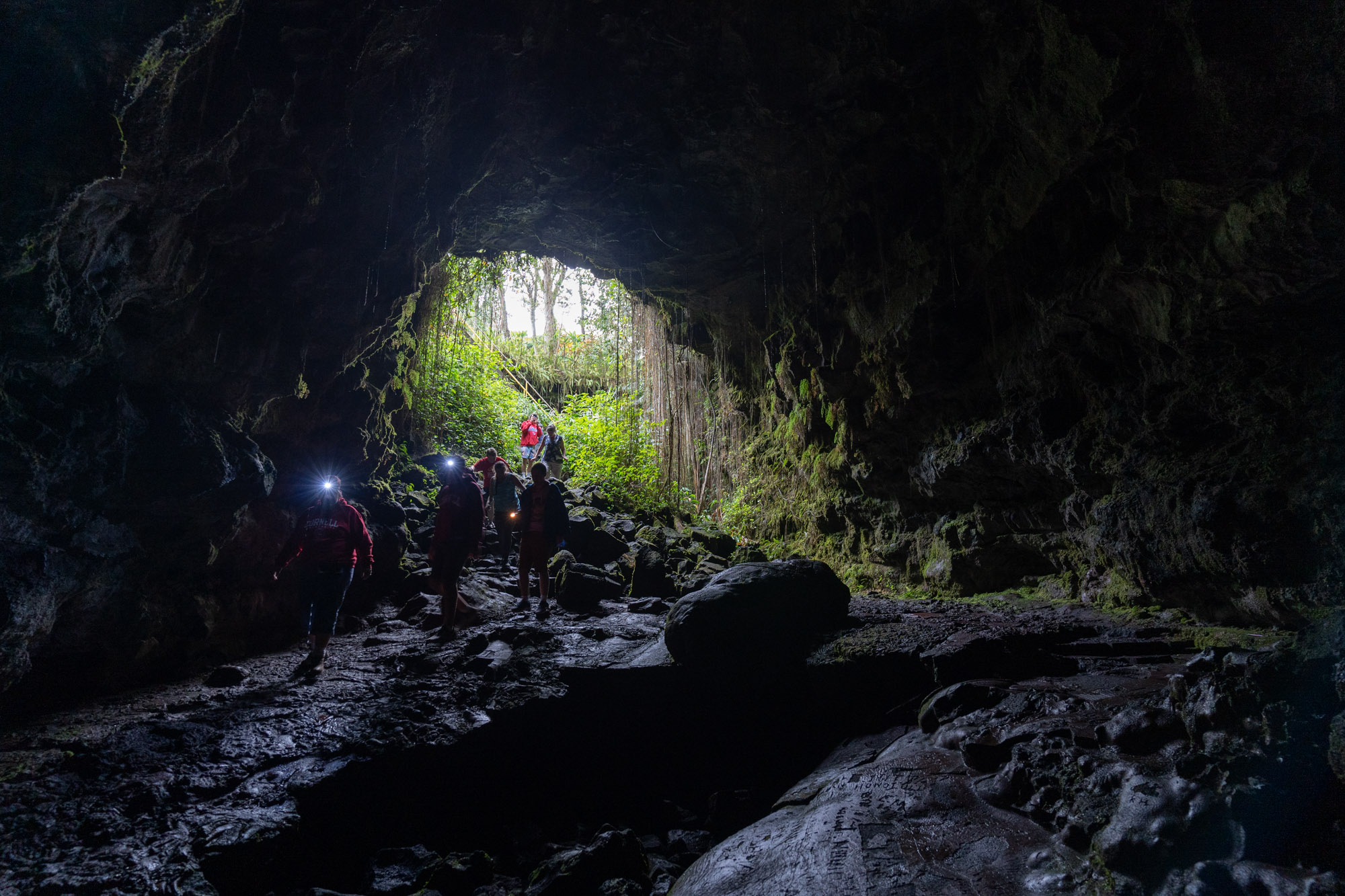

One Reply to “Top 6 Unique Things to Do on The Big Island of Hawaii”